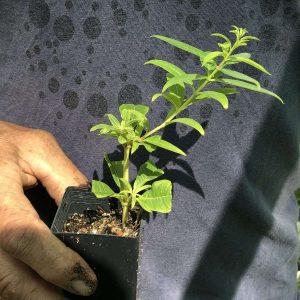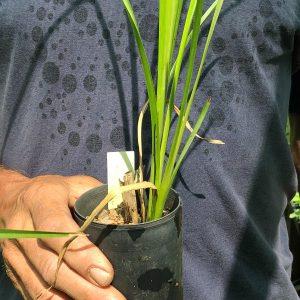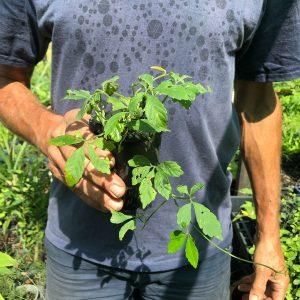$6.95
1 in stock



Our plants still look a bit sparse from winter, all the more subtropical plants need time to come fully back!
There are two types of commonly used lemongrass: East Indian (Cymbopogon flexuosus) and West Indian (Cymbopogon citratus).
Both varieties are used in cooking, however the West Indian lemongrass variety mostly sold commercially.
I like this one because of the dainty look.
The East Indian lemongrass is also the more tropical variety – both like hot and humid conditions, but they grow very well in the Port Stephens area.
Other names: Cochin grass, East-Indian lemon grass or Malabar grass.
I’m 99% sure that I got the variety identification right. This lemon grass was propagated from seed initially.
East Indian Lemongrass is not frost resistant, but might survive lighter frost and grow back from the roots. It is suitable for warm temperate to tropical areas. Lemongrass can be grown in a container. It is drought tolerant once established but prefers to be well watered. In warmer areas growth will be vigorous and lemon grass can be used as weed barrier or cut as mulch.
Lemon grass prefers a well drained fertile sandy loam but will tolerate poorer soils. It dislikes wet feet.
Lemongrass can be used in tea, cooking, cocktails or for distilling essential oils. Lemongrass scent is gorgeous in perfumes, soaps, candles, cosmetics and detergents.
Lemongrass is also used in herbalism for treating insomnia, stomach and respiratory disorders, fever, and infections. It has possible antioxidant activities and might help to manage type 2 diabetes and cholesterol levels. It is also used to combat fatigue and anxiety.
Only logged in customers who have purchased this product may leave a review.
Reviews
There are no reviews yet.